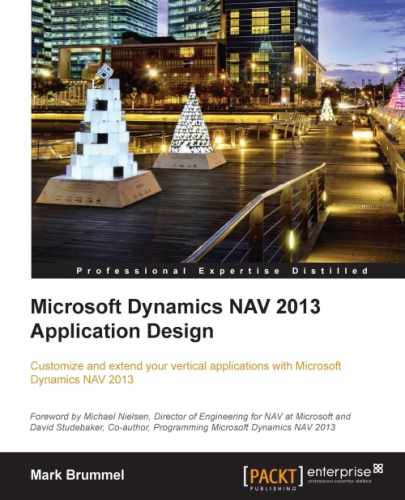Once upon a time; this is how fairytales often start and even though the story of Microsoft Dynamics NAV is everything but a fairytale, it sure has some magic.
With more than 100,000 installations, it is one of the most popular ERP packages in the mid-market. In this book, we will go through the magic of the Dynamics NAV application. We'll see how Dynamics NAV will give better information on how our business is doing and provide a better insight where processes can be optimized or need to be changed.
In this chapter, we'll discuss the basic principles of the Microsoft Dynamics NAV application, how it's structured, and why. After reading this chapter, you will have a better understanding of what to expect when implementing and designing for Microsoft Dynamics NAV.
At the time of publishing this book, Microsoft Dynamics NAV 2013R2, is the most recent version of the product. When the Windows version was first introduced in 1995, the product was called Navision Financials 1.0. The Danish software company that originally developed the product, Navision Software A/S, was not yet acquired by Microsoft and it was a revolution. It was a full Windows product and had all basic functionality that small companies needed. It is important to understand that the original version was targeted at smaller companies.
Since then, we have had many (20+) versions. All new versions contained new functionality and with it the product has become more mature and suitable for bigger companies as well. This was especially empowered with the support of the Microsoft SQL Server platform, allowing more concurrent users to work in the same application areas.
Until Version 5.0, the technology of the product did not change. The original intention of Microsoft was to release a new technology platform together with new functional changes. This turned out to be a very difficult task so they decided to split the technology into two releases. Version 5.0 contained new functionality and improvements while Version 2009, or 6.0, which is the technical release number, was a technology release.
The technical challenge was to migrate from the old C++ platform to .NET and to move from a two tier to a three tier technology. This was also the first release with a drastic change in the user interface. Microsoft Dynamics NAV 2009 contains an entirely new user interface, the Role Tailored Client, which is built new from the ground up — the existing (classic) user interface is the same with no changes. During this migration process, all application functionality was frozen although small improvements and bug fixes were made in 2009 SP1.
With Microsoft Dynamics NAV 2013, we have entered a new era where the transformation is complete. The product is converted to .NET and even supports limited use of DotNet Interoperability directly from the C/AL programming language. The classic user interface is discontinued as is the native database.
This book supports functionality from the 2013 release although most concepts relate back to the older versions.
